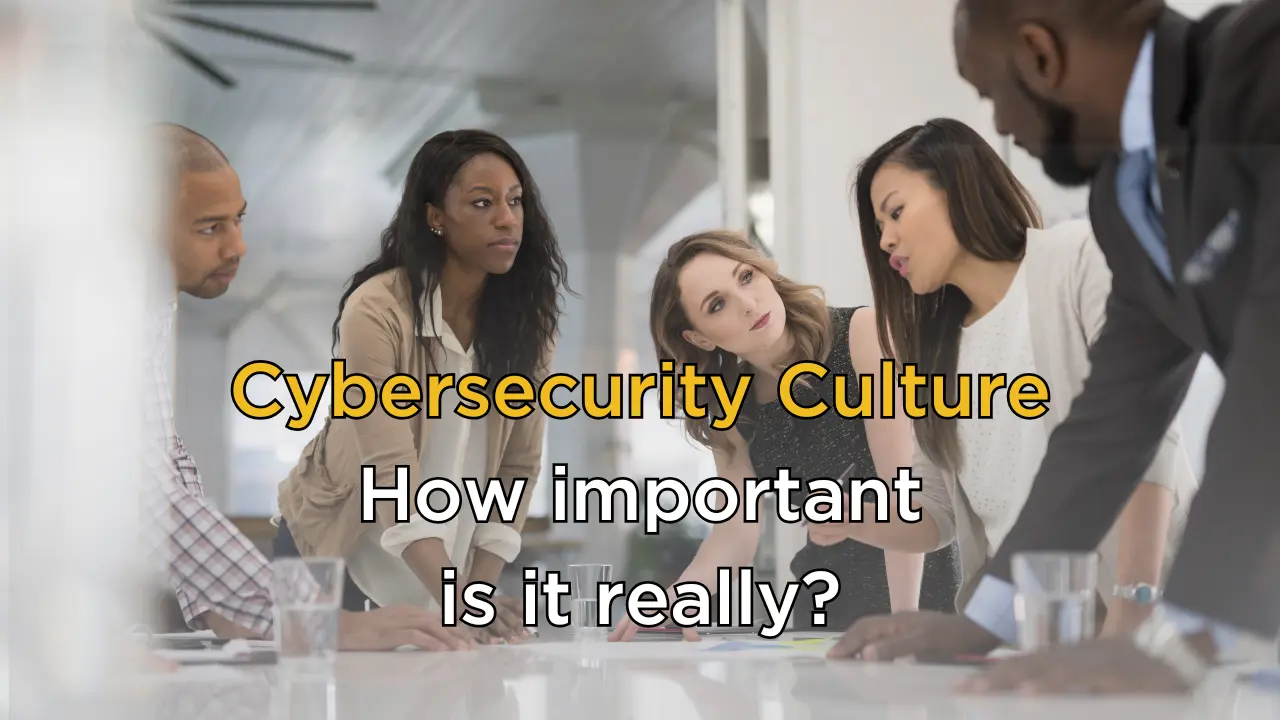
Creating a culture of cybersecurity throughout your organization is arguably the most important aspect of keeping your business secure. While many business leaders may prefer to offload the responsibility of cybersecurity to their I.T. department or an outsourced cybersecurity provider – that can only go so far in protecting your business. One of the most dangerous attitudes you can have is, “My I.T. department takes care of all our cybersecurity, so we’re good.” Let’s explore together why creating a culture of cybersecurity is so important and so effective in safeguarding your business.
The Critical Role of a Good Cybersecurity Culture
It wasn’t too long ago that we saw headlines of cyber-attacks almost daily. Over time we may have become desensitized to these threats, but that doesn’t mean they’ve gone away. In fact, cybercrime is estimated to cost the world over $10.5 trillion this year alone. Cyber criminals don’t discriminate – so whether your business is big or small, you’re a target.
With an average cost of $4.5 million, it’s easy to see how devastating a data breach can be for a business. Even though the effects might not be immediate, the financial and reputational damages often have long-lasting effects. In the case of 23 and me, they filed for bankruptcy nearly two years after their data breach in 2023.
Research has shown that over half of all data breaches involve a non-malicious human element. Cyber criminals are clever and take advantage of human tendencies to breach our data. From phishing emails to social engineering, the threat is knocking at our door every day.
We have to face it: mistakes happen. But that doesn’t mean there’s nothing we can do to mitigate and reduce the number of mistakes that occur within our business.
Building a Cybersecurity Culture
It all starts at the top. As with everything else, the best way to get your team onboard with practicing good cyber hygiene is to lead by example. A leadership team committed to cybersecurity will show the rest of your team where your priorities lie, and they will follow suit. Does your CEO keep their password under the keyboard, or do they consistently use their password manager? Your employees will likely do the same.
But it doesn’t end there. Creating written policies and procedures for your staff to follow ensures clear communication and an equal standard throughout your business. Start simple and get your staff involved in the process. Over time, you will have a robust set of policies and procedures to keep your defenses strong. Review your policies on a regular basis and make sure they are still applicable. Typically, reviewing your policies and procedures annually is a good cadence.
With a leadership team dedicated to cybersecurity and policies and procedures to back them up, there’s one key piece left. Training. That’s right – it’s time to go back to school. Every individual in your business needs to have regular, structured, training to keep cybersecurity top of mind. We recommend employees take a full training at least annually, with smaller “micro” training sessions throughout the year. You can try different strategies to keep it engaging – including group discussions or competitions with a reward for the top performers.
Some topics to cover in training;
- Phishing
- Social Engineering
- Password Management
- Security Incident Response
How to Get Started
If this seems a bit overwhelming, you’re not alone. But educating yourself with articles like this are a great first step! To begin implementing these things, you’ll need to take a critical look at your current cybersecurity posture. Make a list of items that need to be addressed, then prioritize them based on ease-of-resolution and criticality. A cybersecurity risk assessment from a third party is an excellent way to accomplish this.
Next, begin writing your written information security policy (also known as a WISP). This policy outlines the “dos” and “don’ts” of your organization, as it concerns cybersecurity, technology, and private information.
Start with something simple, like your password policy;
- How long should all passwords be?
- What words or information should never be included in a password?
- Do you require the use of a password manager? Which one?
- When should passwords be changed – is this managed by I.T. or someone else?
Over time, you will expand upon your WISP and make it better and better. Remember; a partial policy is better than nothing at all. As your flesh out your WISP, you will be able to work with your I.T. department to implement technical solutions that enforce your policies. Some common security measures include updating firewalls, encrypting devices, and deploying a password manager. At this point, you’re already miles ahead of organizations that don’t take the first step (which, unfortunately, is most businesses).
Don’t Wait – Start Today!
In conclusion, creating a culture of cybersecurity starts at the top. With a bit of preparation and a dedication to cyber hygiene, you will fortify your defenses and minimize the risk of cyber-attacks against your business. Ready to get started? Click the link below to learn how Sentry CTO can help you create a culture of cybersecurity in your business.




